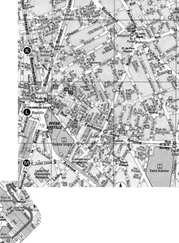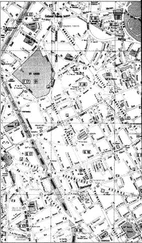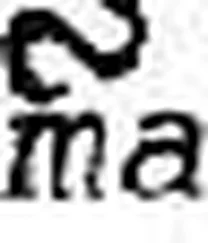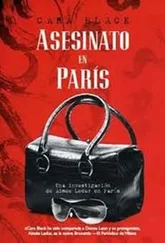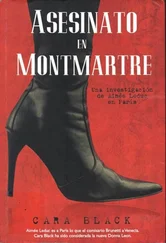With a studied calm she didn’t feel, Aimée thumbed open the folder from the IGPN, the disciplinary branch within the police. Inside lay a lined yellow sheet with notes written in an angular hand.
With the bar, she began scanning the notes, which were dated 1976. The first page had a coffee stain and recounted surveillance on rue de Cléry. She recognized the address. Romain Figeac’s apartment.
Her brow beaded with sweat. The air in the lavatory was stifling and the scanner’s speed was only about five pages per minute.
The surveillance entailed the comings and goings from the apartment of a female suspect. The phone tap report stated she’d used Figeac’s phone for calling and receiving calls from a Left Bank gallery owner, known by the police to fence stolen paintings. From what Aimée gathered, the gallery owner was feeding information to the police. There were several blurred black-and-white photos of a woman wearing what looked like a long blond wig, in sunglasses, carrying a shopping bag supposed to contain Modigliani paintings. The woman caught in the act was named—Sydney Leduc.
Her own mother caught (by her father?) in a police sting. Aimée sat in the small cubicle, and the world, as she knew it, crumbled.
Aimée’s mother had been jailed and brought to trial, not for terrorism, but for the theft of Laborde’s paintings. There was no proof of her participation in the kidnapping and murder of Laborde. So that’s why she’d only been in prison a year.
But why hadn’t Aimée known about any of this? She looked at the date … That year she had been sixteen, that was the time she’d been an exchange student at a high school in New York!
Aimée read further. Offered the chance to inform on the gang for a lighter sentence, Sydney had agreed to find out the location of terrorist gang members and their loot. But Aimée read between the lines. Her father had cut a deal for her mother.
Yet at the end of the report, her father had been brought up for disciplinary hearings. Why? That didn’t make sense.
There was no explanation, unless he had been found in possession of the seized paintings on July 15th during the surveillance sting.
On another sheet, with “Surveillance Unit” written across the top, were several names:
Szlovak
Dray
Teynard
Leduc
She recognized Szlovak, a middle-aged man on her father’s Commissariat team who’d retired early. Dray had been kicked upstairs to the préfecture at the Quai des Orfèvres ten years or so before. Teynard had been posted to the STUP, the narcotics branch of the Brigade Criminelle.
Her wrist ached. She managed to scan the Action-Réaction files before her cell phone vibrated. Within two minutes she’d finished, disconnected the scanner bar from her palm organizer, and stood reapplying Chanel red lipstick at the old silver-edged mirror.
The lavatory attendant, an older woman with her white hair in a bun, a copy of Telé-Journal under her arm, appeared as Léo returned. Aimée watched him enter the stall but not before she winked and dropped ten francs in the bowl.
A half hour later, back at her office, she found Szlovak’s number on the Minitel, left a message, looked up Dray in the préfecture, and had no luck finding Teynard at the Brigade.
At the préfecture, the receptionist said Dray had left for vacances the day before. Aimée sat down to reread the pages she’d faxed and to read those she hadn’t had time to.
Something felt off. Way off.
She didn’t know what was bothering her but … and then she looked up. The dates were wrong. They had to be.
She reread the file. On her office wall was her favorite photo of herself with her father, taken the day after Bastille Day in 1976. They’d spent the whole day together before her flight to New York. She looked closer at the surveillance log dated July 15, 1976, containing her father’s name. The day the paintings were recovered.
But Bastille Day was always July 14th.
So her father had been with her on July 15th. Not on stakeout.
He’d been set up. And she was the proof.
She took the photo from the wall and stuck it in her bag with the Modigliani data she’d copied from the Agence France Presse.
A further search showed Teynard had retired. He ran a detective firm with his nephew on rue de Turbigo.
Close. On the edge of the Sentier and a few blocks away.
Forget the scooter. She needed to walk. Work out some angry energy, so she wouldn’t arrive at Teynard’s swinging. At least not at first.
“ D ESOLÉE, MADEMOISELLE Leduc!” said the secretary, Madame Goroux. “Monsieur Teynard’s evening seems totally booked.”
“Please, can’t you fit me in?” Aimée asked, letting the whine rise in her voice. “Something’s come up, it’s important.”
“He handles cases jointly with his nephew,” Madame Goroux said. “Let me see if he’s available.”
“Merci,” Aimée said. The nephew might help her to get to see his uncle.
An express delivery man wheeled in a package on a dolly. “ Bonjour , Madame Goroux, I need the patron ’s signature.”
“I can sign, Cédric,” she said.
“Sorry, but the sender specifically required Monsieur Teynard’s signature.”
“Come back in a while,” said Madame Goroux, consulting her schedule. “He marked himself out until his three o’clock appointment.”
Aimée glanced at her Tintin watch.
Twenty minutes. If he was on time.
She left and descended the worn stairs. In the quiet mosaic-tiled lobby of Teynard’s building, her mind raced. She chewed Nicorette furiously, dying for a cigarette. Within ten minutes, a dapper white-haired man in his sixties in a wheat-colored linen suit entered the lobby.
“Monsieur Teynard?” she asked, standing partially behind a pillar.
He removed his sunglasses and blinked, adjusting his eyes from the glare outside to the darkened lobby.
“Mademoiselle, are we acquainted?” he asked, a smile spreading over his face. A whiff of scented aftershave accompanied him. Perhaps he fancied himself a ladies’ man.
“Indirectly,” she said, walking toward him. “That’s what I’d like to talk about.”
He squinted.
Aimée hit the light switch, flooding the lobby with light.
Teynard’s brow furrowed as he stared at her.
“If I didn’t know better,” he said in a low voice, “I’d say the past has come back …”
“To haunt you?” she finished for him. “Let’s go talk.”
Aimée pointed to the café in Passage du Bourg-l’Abbé directly opposite Teynard’s office.
WITH A wary look, Teynard watched her set two espressos on the café table. She pushed the round aluminum sugar cube bowl toward him. The young owner, wearing a Lakers tank top and prayer beads around his wrist, sat behind the counter reading a Turkish newspaper.
Apart from Aimée and Teynard, the narrow cafe, with its yellowed smoke-stained walls, hammered-tin counter, and brown leatherette chairs, was empty. From the corners came the musk-like smell of lingering genteel decay. Wood-framed windows fronted the passage under a glass-and-iron roof probably unchanged from Napoleon’s time.
“Monsieur Teynard,” she said, “you were part of the Galerie Arte surveillance on July 15, 1976, weren’t you?”
“That’s a long time ago,” Teynard said, smoothing back his hair. His ice blue eyes darted over the café.
“I’m interested in your version.”
“My version?”
“You were there along with my father, Dray, and Szlovak.”
“I don’t remember.”
She nodded, unwrapping the sugar cube’s paper. “Good point. Maybe you weren’t there either. I know Papa wasn’t.”
Читать дальше


